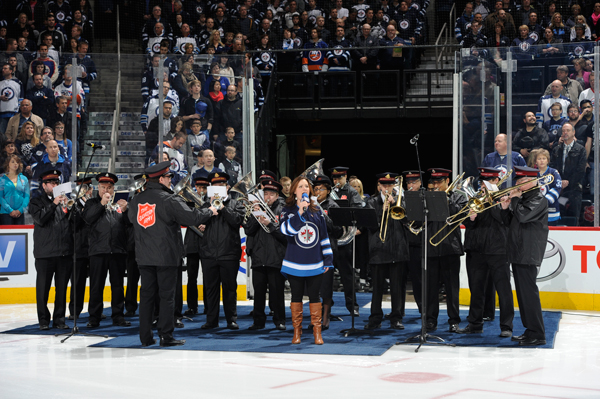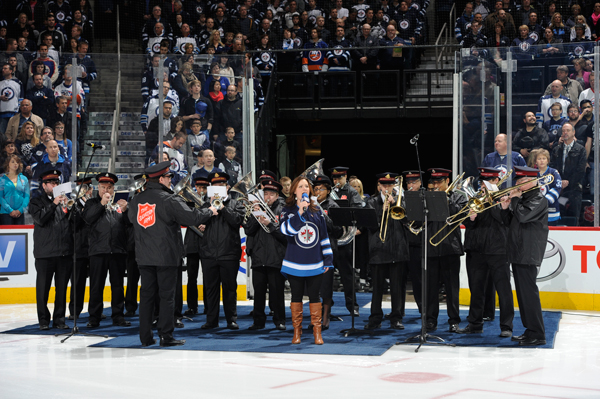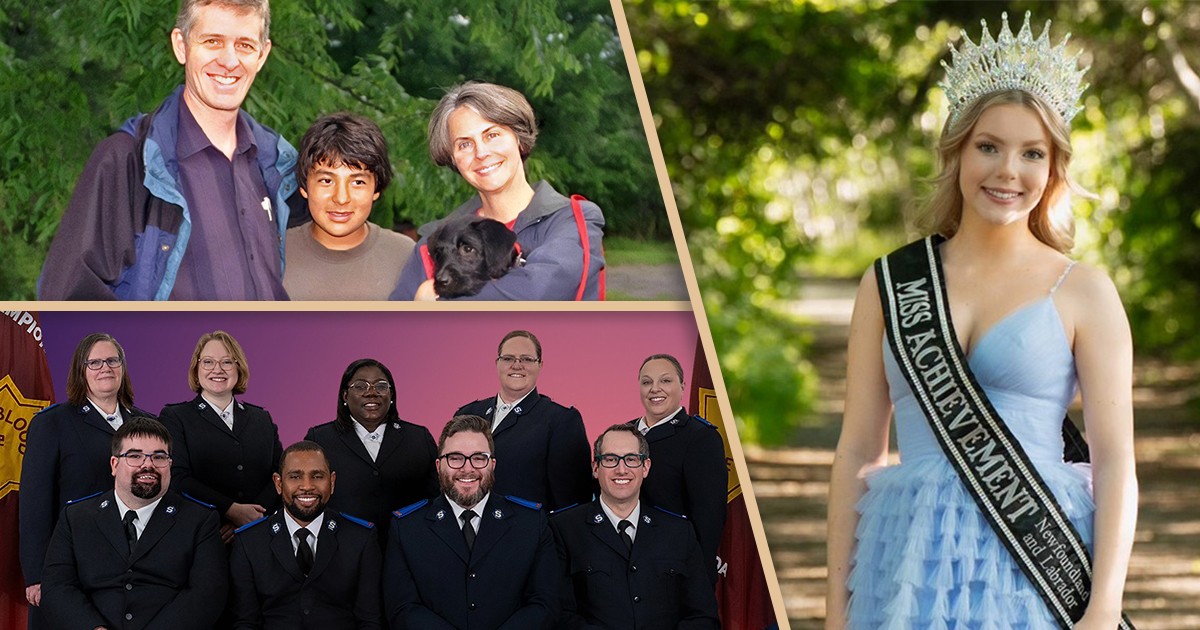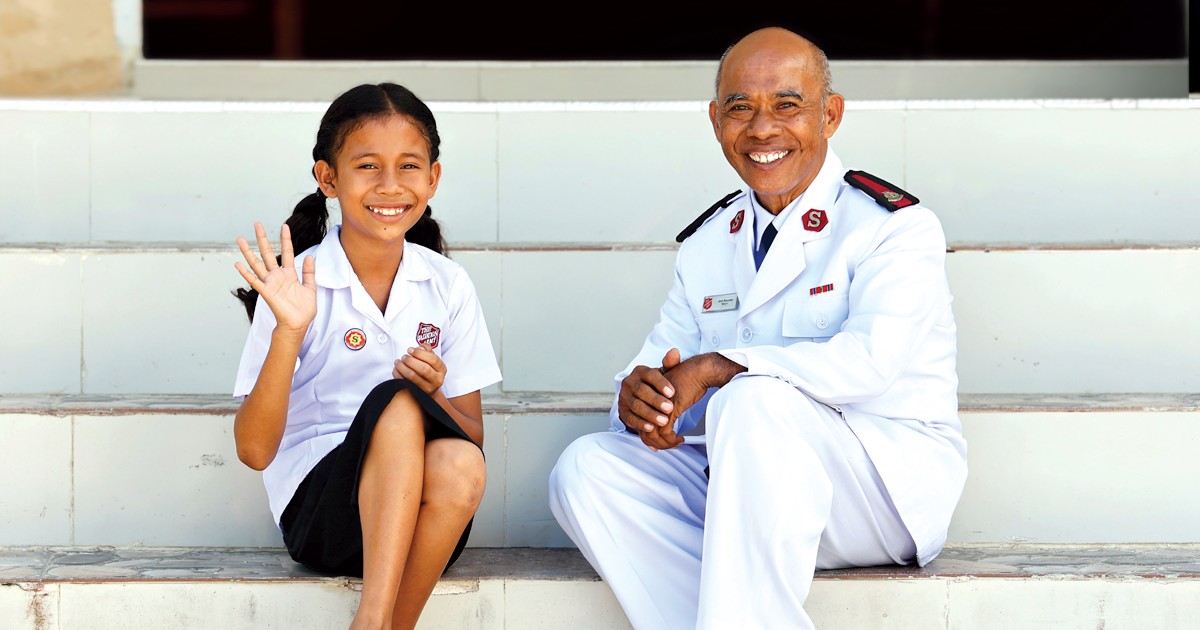 The Salvation Army Band plays the national anthem with Jets' singer Stacey Nattrass
The Salvation Army Band plays the national anthem with Jets' singer Stacey Nattrass
It's one thing to watch a hockey game from seats high up in the arena and quite another to watch from seats much closer to the action. The sound of skates speeding across the blue line, the crash of bodies into the boards, the heated exchange between players and referees… There's something about being close to ice level that impacts our experience of the game. Two recent events brought me to ice level at the MTS Centre in Winnipeg.
Even by Winnipeg standards, it was a bitterly cold morning in January. It was also the end of the NHL lockout. For the first time in months, the Winnipeg Jets would be skating at the MTS Centre. The whole city had waited for this moment. But before the players skated, something else happened. A short memorial was held for the victims of the Sandy Hook Elementary School shooting. One of the families involved in the tragedy had recently moved from Winnipeg to Newtown, Connecticut, and Winnipeggers arranged a service to honour their lives.
I walked into the arena with my wife, Cathie. We were directed to seats at ice level, directly below the video scoreboard. Due to his involvement with the fire department, Cadet Mark Young led the service and spoke. His son, Jordan, and another young teen read the names of each victim, after which a fireman rang a bell in their honour. At one point during the service, I looked up to see the names of six-year-old students and staff members of the school circling the digital rim: Charlotte Bacon, Ana Marquez-Greene, Dawn Hochsprung…. Some of the kids may have smiled to see these names displayed in this arena. I did. Tragedy takes on a particular view at ice level.
Three months later, I entered the same MTS Centre at ice level. This time I walked through the gate used by the Zamboni. It was late April, and the Jets were playing the New York Islanders, still in contention for a playoff position. The arena pulsated with 15,000 partisan fans, including 18 Salvationists there to accompany Winnipeg singer, Stacey Nattrass, for the national anthems. I took my place on the carpet at the Islanders' end of the arena. The Islanders' John Tavares skated by with purpose, even in his warm-up. The announcer invited fans to stand for the anthems. We gave an introduction and Nattrass sang The Star Spangled Banner. When she came to the finish, there was prolonged applause. It was the week of the bombings at the Boston Marathon. Suffering crosses national boundaries and this tragic event had been felt deeply by Canadians.
As Nattrass moved effortlessly from the American to the Canadian anthem, the experience was electric. Fifteen thousand people left no doubt about their loyalties to their country, their neighbour and to this game. And there we were, 18 Salvationists playing our brass instruments in accompaniment to the anthems. We, too, shared in the privilege of living in this blessed land. Celebration takes on a particular view at ice level.
Salvationists can be found on a given day in any number of places. We carry out our duties in public hospitals; teach young people in our schools; staff reception centres during times of flood and forest fire; and welcome immigrants from North Africa to our neighbourhoods. We can also be found at ice level in public ceremonies. The esteemed Canadian founder of L'Arche Movement, Jean Vanier, has said that such ceremonies “make present the goals of the community in symbolic form, and so bring hope and a new strength to take up again everyday life with more love.” For this reason Salvationists participate in public ceremonies—especially at ice level.
Major Ray Harris is a retired Salvation Army officer living in Winnipeg. He plays trombone in the Heritage Park Temple Band and enjoys watching episodes of Inspector Lewis.










Leave a Comment